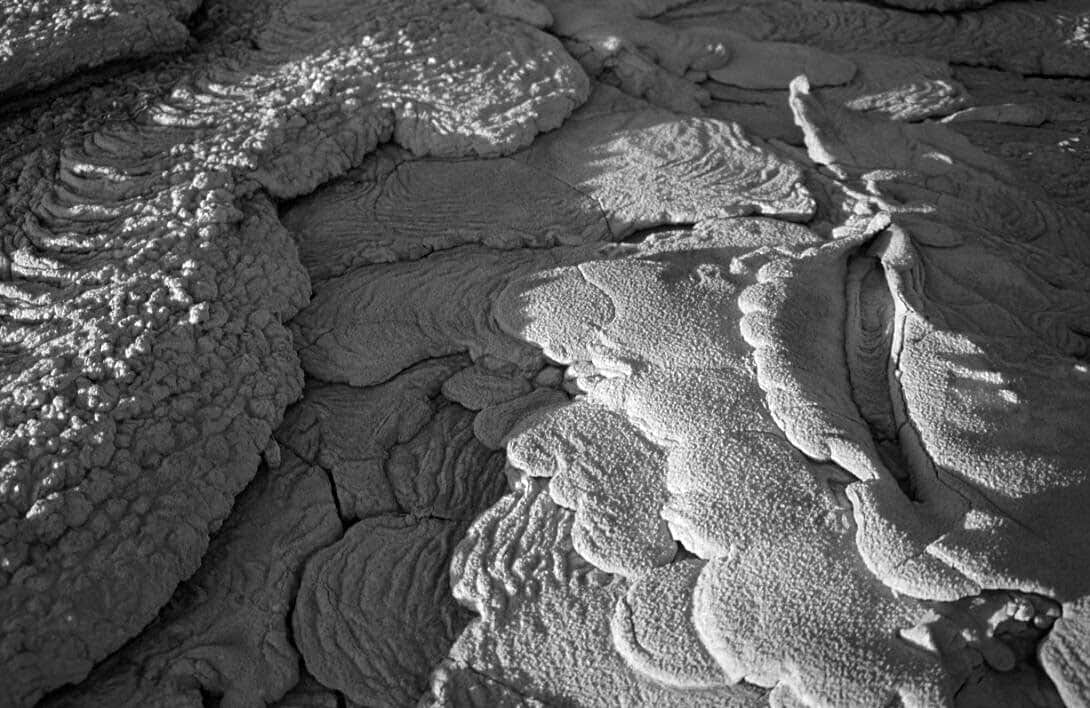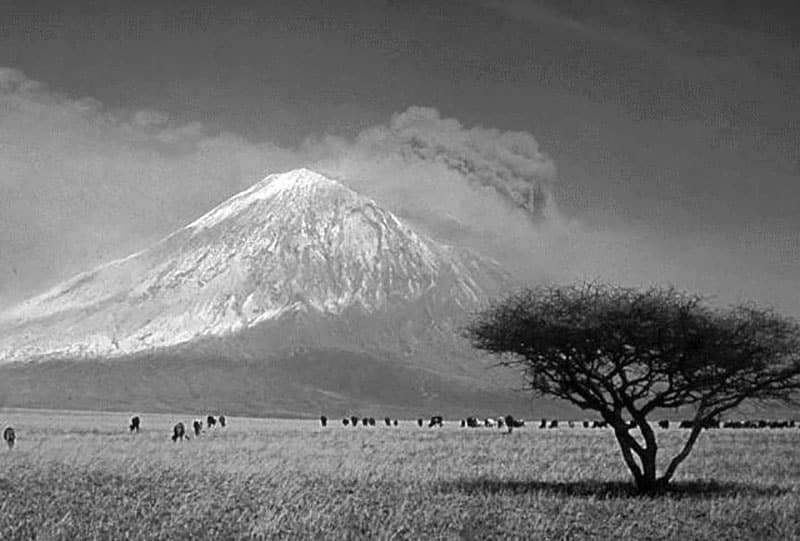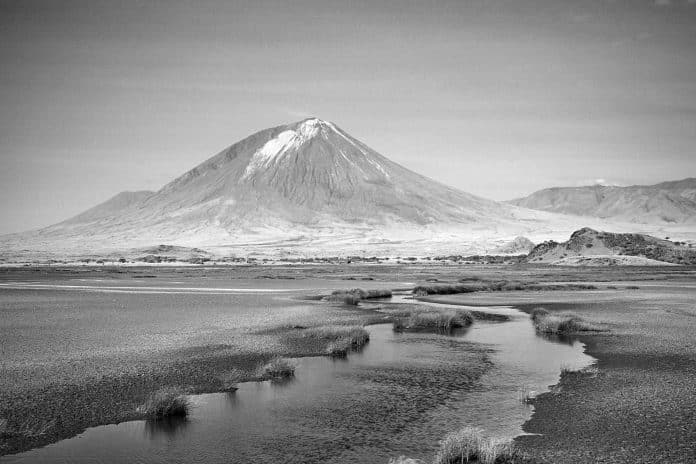Ol Doinyo Lengai Facts – Geology, Ecology, Eruption Activity and More
Where is Ol Doinyo Lengai located? According to the Ol Doinyo Lengai map, Ol Doinyo Lengai (alias Oldoinyo Lengai), which is a Maasai word meaning “Mountain of God”, is an active volcanic mountain within the Gregory Rift, to the south of the Natron Lake, on Tanzania’s Arusha Region. It belongs to the East African Rift Valley‘s volcanic system, and it’s known for producing Natrocarbonatite lava. Geological investigations following the eruption of the mountain in 1960 finally proved the theory that carbonatite is magma derived.
Ol Doinyo Lengai Geology

What Type of Volcano is Ol Doinyo Lengai:
The Lengai ol doinyo volcano is one of the few active volcanoes that generates natrocarbonatite lava, which is a kind of volcanic carbonatite found nowhere else. Nearby are some older carbonatite volcanoes that are extinct, notably Mount Homa.
Lava
Unlike other lavas, which have abundant silicate minerals, Ol Doinyo Lengai cold lava is carbonatite. It contains gregoryite and nyerereite, which are rare potassium and sodium carbonates. The ol doinyo lengai eruption of the lava occurs at comparatively lower temperatures of around 510 degrees celsius (950 °F) because of its unique composition. The volcano’s molten lava looks black when struck by sunlight instead of the usual red glow that lavas have due to its low temperature. It is also a lot more fluid compared to silicate lavas, with viscosities that are typically lower than that of water. The erupted lavas in Mount Ol Doinyo Lengai contain potassium and sodium carbonate minerals, which are unstable on the surface of the Earth and vulnerable to fast weathering, turning grey in color from its original black color. The ensuing volcanic landscape does not resemble anything else on the planet.
Ol Doinyo Lengai Ecology
The produced carbonatite ash has been dispersed throughout the adjacent ol doinyo lengai plate boundary grasslands resulting in a very succulent and enhanced pasture, making the location a crucial stop on the yearly wildebeest migration since it serves as a nursery for thousands of calves.
Ol Doinyo Lengai Volcanic Activity
1883 to 1915
The Ol Doinyo Lengai eruption history has been documented since 1883. Between 1904 to 1910 and 1913 to 1915, flows were documented.
1917
Volcanic ash was deposited about 48 km (30 miles) away during a big eruption in June of 1917.
1926
In 1926, there was an eruption that lasted several months.
1940
Between July to December 1940, an eruption dumped ash as distant as Loliondo, which is 100 km (62 miles) away.
The 1950s
In 1954,55, and 1958, there were several small lava outbreaks.
The 1960s
In the initial years of the 1960s, there were a few minor Mt Ol Doinyo Lengai lava eruptions.
On August 14, 1966, there was a massive eruption. A week later, geologists G. C. Clark and J. B. Dawson visited the mountain’s crater and saw “thick black ash” rising 1,000 m (3,000 feet) above the mountain and drifting towards Lake Natron to the north. They saw a continual flow of gas, white-grey ash, as well as dust emanating from the pit’s center as they climbed the cone-shaped vent.

2007
Daily tremors were felt in Tanzania and Kenya from July 12 to July 18, 2007, at about 8.30 p.m. in Kenya’s Nairobi due to volcanic activity in the Ol Doinyo Lengai Tanzania mountain. On the Richter scale, the strongest tremor was 6.0. The rapid rise in tremors was thought to be due to magma movement through the mountain, as per geologists. On September 4, 2007, the Tanzania volcano ol doinyo lengai erupted, generating a cloud of steam and ash more than 18 km (11 miles) downwind and lava flows in the west and north flanks.
2008
The Ol Doinyo Lengai volcano eruption in 2007 lasted into 2008, with sporadic recurrences. It was believed to be gaining intensity as February ended, with a significant outburst on March 5. On the 8th and 17th of April, further eruptions occurred after periods of quiet. The eruptions lasted until the end of August 2008. In September 2008, an Ol doinyo lengai hike to the Ol doinyo lengai volcano Tanzania summit revealed lava emission from 2 vents on the new crater’s floor had restarted. This activity seemed to have ended on follow-up visits in March and April 2009.
2010
An overflight in 2010 October captured two different lava flows at Lengai Ol Doinyo as well as a tiny lava lake.
2013
The Tanzania volcano Ol Doinyo Lengai has restarted the flow of natrocarbonatite lava that began filling the enormous crater during eruptions that occurred in 2007-2008. On the western border of the crater floor, a big active hornito exists as of 2013 July. Communities living close to the volcan ol doinyo lengai testified multiple tremors in June. The newly formed crater cannot be accessed, and climbers have only caught a glimpse of it on rare occasions.
2019
Ol Doinyo Lengai last eruption was recorded in 2019.
The Mt Ol Doinyo Lengai Congo View
The Congo is one of the countries that border Tanzania and Mt Ol doinyo lengai. From the Congo, you can get an incredible view of the volcano. The mountain is often covered in a thick layer of clouds, but if you’re lucky you might be able to catch a glimpse of the lava flowing down the slopes.
Mt Ol Doinyo Lengai Facts Summary
The Ol Doinyo Lengai location is Tanzania. The mountain is a famous attraction with hotels such as the ol doinyo lengai hotel karatina, named after it. The mountain is the only volcano to have erupted continuously in the last 200 years and is one of the most active volcanoes in the world. The last major eruption of the Ol Doinyo Lengai occurred in 2008, and since then, the volcano has been ejecting lava on a regular basis.
The Ol Doinyo Lengai climb to the summit of is not for the faint of heart. The ol doinyo lengai volcano map discloses a trail that is steep and loose, and the summit is reached after a very long and strenuous hike. The conditions on the volcano can also be very unpredictable, so it is important to be prepared for anything. But despite all of these challenges, ol doinyo lengai besteigung is an incredibly rewarding experience.
For more articles related to Mountains of Tanzania, click here!


































